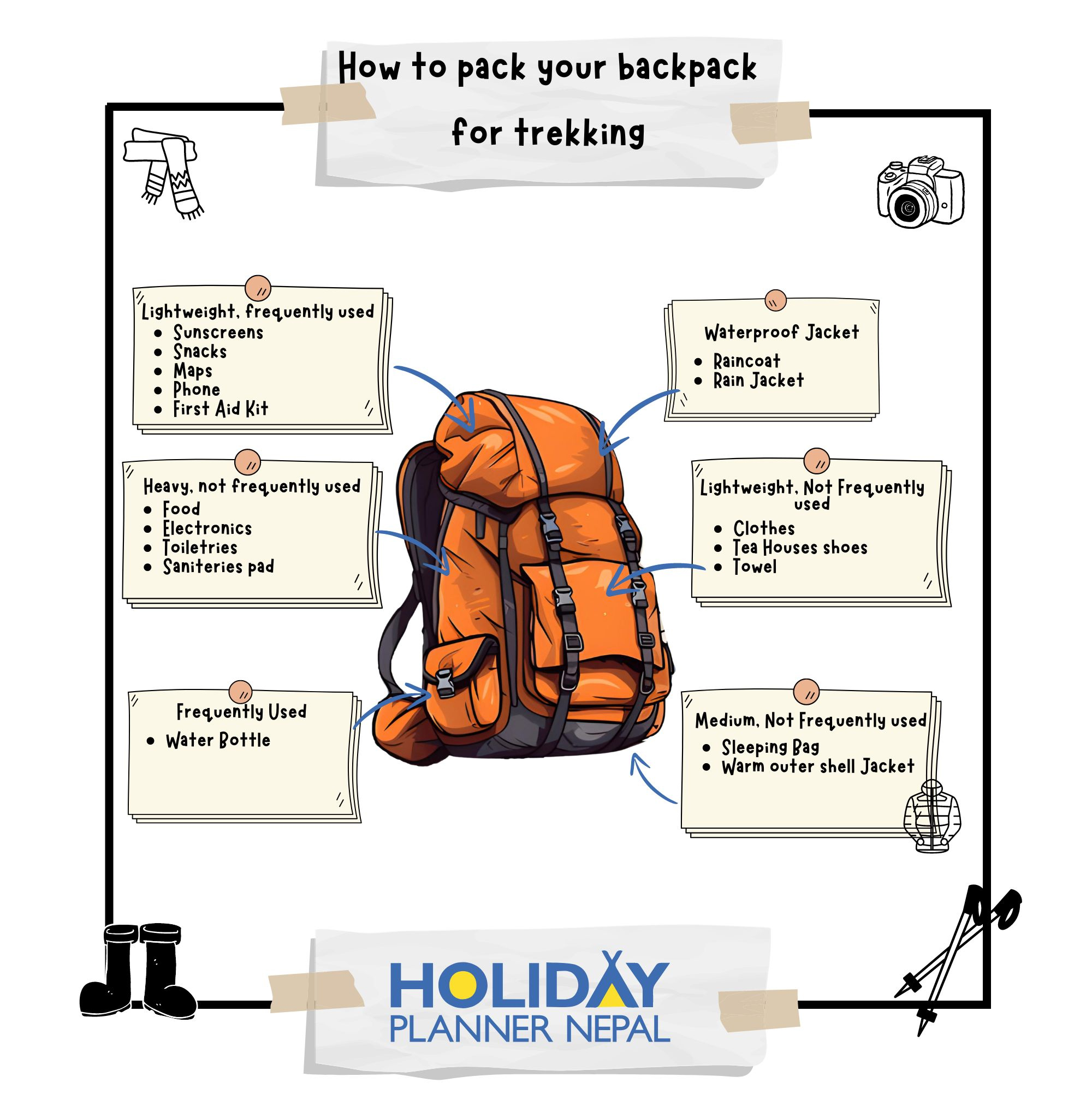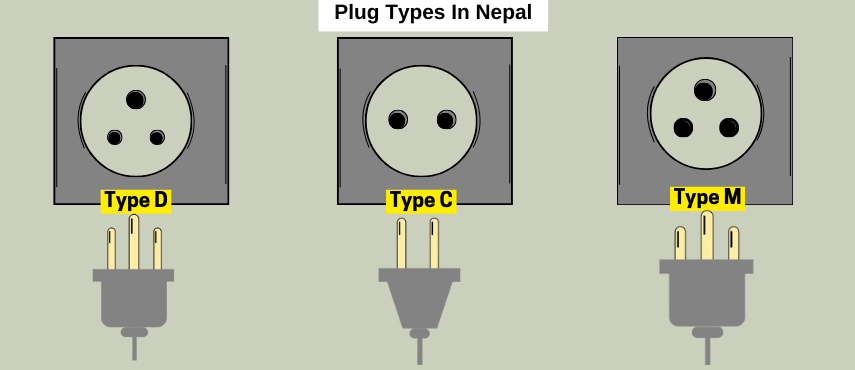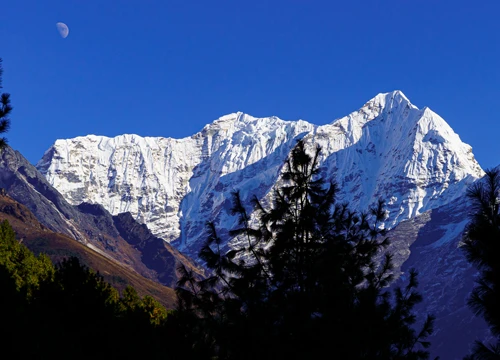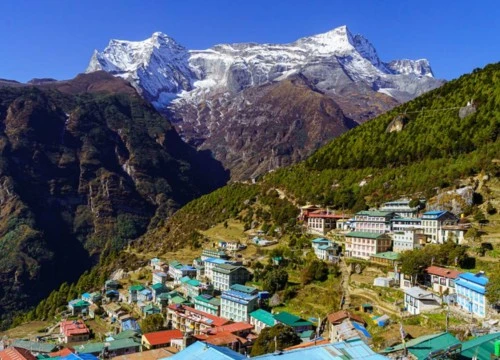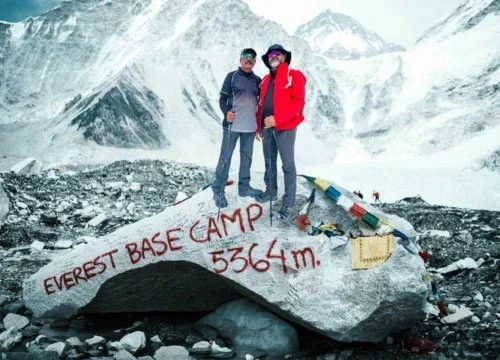Why Choose Everest Base Camp Trekking?
The Everest Base Camp Trek is more than just a journey—it’s an emotional and spiritual experience. Trekkers pass through charming Sherpa villages, ancient monasteries, high-altitude landscapes, and the iconic viewpoint of Kala Patthar for sunrise over Everest. The trail offers:
Spectacular views of Everest, Lhotse, Ama Dablam, Nuptse, and other Himalayan giants
Immersive experiences with the warm and welcoming Sherpa community
Exploration of UNESCO-listed Sagarmatha National Park
Adventure through suspension bridges, glaciers, and alpine terrain
This trek is perfect for those seeking natural beauty, adventure, and a true Himalayan challenge.
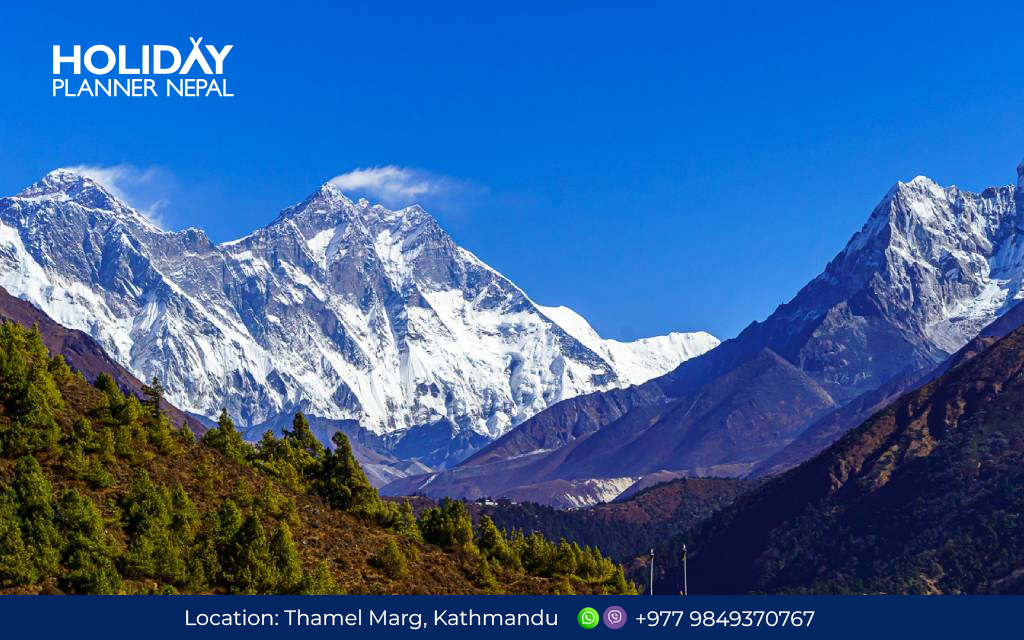
Highlights of Everest Base Camp Trekking
Everest Base Camp Trekking is the most popular trekking destination in the Solukhumbu region of Nepal, at an altitude of 5,364 meters (around 17,600 feet). The trek to Everest Base Camp offers breathtaking views of Mount Everest and other peaks in the Himalayan Mountain Range.
- The trek to Everest Base Camp begins with a scenic flight from Kathmandu or Ramechhap to Lukla, a small mountain town. The flight offers stunning views of the Himalayas and the terraced fields below—one of the most adventurous flights in the whole world.
- View mesmerizing mountains like Everest, Lhotse, Nuptse, Pumori Cho-Oyu, Ama Dablam, and Makalu.
- The trek passes through Sagarmatha National Park, a UNESCO World Heritage Site home to various flora and fauna, including the endangered snow leopard.
- The Solu-Khumbu region is home to the Sherpa people, known for their mountaineering skills and unique culture and traditions. Trekkers can interact with and learn about the Sherpa culture along the way.
- The trek passes by several ancient monasteries and stupas, which offer a glimpse into the region's rich cultural and spiritual history. Tengboche monastery is one of the oldest, formed in 1934 and reconstructed and maintained until today.
- As you progress along the trek, you'll pass through several high-altitude villages, each offering unique views of the surrounding mountains.
- The ultimate goal of the trek is to reach Everest Base Camp, where you'll get up close to the towering peaks of Mount Everest, Lhotse, and Nuptse.
- Another highlight of the trek is a visit to Kalapatthar, a viewpoint located at 5,545 meters (18,192 feet). From here, you'll have a panoramic view of the surrounding mountains, including a close-up view of Mount Everest.
Major Attractions on Everest Base Camp Trekking
Everest Base Camp Trekking is one of the most iconic trekking experiences in the world. From stunning Himalayan landscapes to Sherpa culture, here are the highlights you’ll encounter along the trail:
1. Lukla – Gateway to Everest
Why visit: The starting point of the trek, Lukla has the world-famous Tenzing-Hillary Airport and offers a first taste of Himalayan scenery.
Attractions: Local Sherpa villages, mountain views, bustling marketplaces.
2. Namche Bazaar – Sherpa Hub
Why visit: The largest town in the Khumbu region, often called the “gateway to Everest.”
Attractions: Sherpa culture, trekking gear shops, cafes, local markets, Everest View Hotel viewpoints.
Bonus: Great spot for acclimatization and exploring local monasteries.
3. Tengboche Monastery
Why visit: One of the most famous monasteries in the Everest region.
Attractions: Ancient Buddhist rituals, stunning views of Ama Dablam (6,812m), panoramic Himalayan scenery.
4. Dingboche – Alpine Meadows
Why visit: A serene village at 4,410m known for its lush meadows and clear mountain views.
Attractions: Viewpoint for Lhotse, Ama Dablam, and Island Peak. Perfect for acclimatization and photography.
5. Lobuche – Glacial Terrain
Why visit: High-altitude village surrounded by glacial moraine.
Attractions: Dramatic peaks like Pumori (7,161m) and the Khumbu Glacier. Stepping stone toward EBC.
6. Everest Base Camp (EBC)
Why visit: The ultimate destination for trekkers.
Attractions: Spectacular views of Mount Everest (8,848m), Khumbu Icefall, prayer flags, and mountaineering history.
Tip: Sunrise at Kala Patthar (5,545m) gives the best panoramic views of Everest and surrounding peaks.
7. Kala Patthar – Iconic Viewpoint
Why visit: Offers the best close-up view of Everest.
Attractions: Panoramic vistas of Everest, Lhotse, Nuptse, and surrounding peaks. A photographer’s dream.
8. Gokyo Lakes (Optional Extension)
Why visit: A stunning alternative route to EBC.
Attractions: Crystal-clear turquoise glacial lakes, panoramic views of Cho Oyu and Everest, less crowded trails.
9. Sagarmatha National Park
Why visit: A UNESCO World Heritage Site protecting unique flora, fauna, and Himalayan ecosystems.
Attractions: Rare wildlife like snow leopard, Himalayan tahr, and musk deer; rhododendron forests; high-altitude landscapes.
10. Sherpa Culture & Villages
Why visit: Experience traditional Sherpa lifestyle, festivals, and hospitality.
Attractions: Monasteries, prayer walls, tea houses, and local cuisine along the trail.
How does the Everest Base Camp trekking start and end?
Everest Base Camp trek begins with a magnificent flight to Lukla's Sherpa town and its unusual little airfield. Then, our walk follows the Dudh-Koshi River upstream via the Sherpa agricultural communities of Phakding and Monjo to enter Sagarmatha National Park.
We spent a day extra in Dingboche for acclimatization before pushing ourselves towards the 5000-meter altitude. From Dingboche, we got to Lobuche, where we stayed the night and went the next day towards Everest Base Camp. After reaching Everest Base Camp and spending some time there, we come down towards Gorakshep, where we spend the night. The next day, we head towards Pheriche or Pangboche, depending upon the client's condition, follow the trail towards Namche for the tenth day of our trip, and head towards Lukla on the final day to celebrate our achievement and conduct a party.
We fly back to Kathmandu on the 13th day after completing Everest Base Camp Trek.
Note: The trek to the Everest Base Camp usually starts in the village of Lukla, a short flight from Kathmandu. From Lukla, it takes about 11 days to reach the base camp and get back to Lukla, depending on the route and the pace of the trekker. The trek to the base camp is a popular adventure for people who enjoy hiking and experiencing different cultures. It is an achievable goal for people with moderate fitness levels.
Everest Base Camp Trekking - 14 Days Altitude and Distance Coverage
Day | Activity | Altitude (m/ft) | Distance (km/miles) | Duration (hours) | Elevation Gain/Loss |
01 | Arrival in Kathmandu and transfer to the hotel. Evening briefing and welcome dinner. | 1,350 m / 4,429 ft | - | ~30 min drive | - |
02 | Fly to Lukla and trek to Phakding. | 2,860 m / 9,383 ft 2,640 m / 8,661 ft | ~7 km / 4.3 miles | ~4 hrs walk | -190 m / -623 ft |
03 | Trek to Namche Bazaar. |
| ~11 km / 6.8 miles | ~6 hrs walk | +800 m / +2,625 ft |
04 | Acclimatization day at Namche Bazaar with local excursions. | 3,440 m / 11,286 ft | ~3-5 km / 2-3 miles (hike) | Flexible | ~+300 m / +984 ft (optional) |
05 | Trek to Tengboche Monastery. | 3,867 m / 12,687 ft | ~9 km / 5.6 miles | ~5 hrs walk | +427 m / +1,401 ft |
06 | Trek to Dingboche. | 4,260 m / 13,976 ft | ~9 km / 5.6 miles | ~5 hrs walk | +393 m / +1,289 ft |
07 | Rest and acclimatization day at Dingboche with optional hikes to nearby viewpoints. | 4,260 m / 13,976 ft | ~4-6 km / 2.5-3.7 miles (hike) | ~3-4 hrs (optional) | ~+200 m / +656 ft (optional) |
08 | Trek to Lobuche. | 4,930 m / 16,174 ft | ~7 km / 4.3 miles | ~5 hrs walk | +670 m / +2,198 ft |
09 | Trek to Everest Base Camp and return to Gorakshep. | 5,364 m / 17,598 ft | ~12 km / 7.5 miles | ~6 hrs walk | +434 m / +1,424 ft (to EBC), -434 m / -1,424 ft (back to Gorakshep) |
10 | Hike to Kalapathar and trek to Pangboche via Pheriche. | 5,545 m / 18,192 ft | ~15 km / 9.3 miles | ~6 hrs walk | -1,645 m / -5,397 ft |
11 | Trek to Namche Bazaar. | 3,440 m / 11,286 ft | ~11 km / 6.8 miles | ~6 hrs walk | -460 m / -1,509 ft |
12 | Trek to Lukla. | 2,860 m / 9,383 ft | ~18 km / 11.2 miles | ~4 hrs walk | -610 m / -2,001 ft |
13 | Fly back to Kathmandu and transfer to the hotel. | 1,350 m / 4,430 ft | - | ~35 min flight | -1,480 m / -4,856 ft |
14 | Final international departure from Nepal. | 1,350 m / 4,430 ft | - | ~30 min drive | - |
Outline Everest Base Camp Trekking Itinerary: 14 Days.
- Day 1: Arrival in Kathmandu at 1,350 meters and transportation to the hotel.
- Day 2: Fly to Lukla (2,830 m) and trek to Phakding (2,640 m) in four hours.
- Day 3: 6-hour trek to Namche Bazaar (3,440 m).
- Day 4: Acclimatization day and local trip at Namche Bazaar.
- Day 5: 5-hour trek to Thyangboche Monastery (3,867 m).
- Day 6: 5-hour trek to Dingboche (4,260 m).
- Day 7: Acclimatization and a touring day at Dingboche.
- Day 8: 5-hour trek to Lobuche (4,930 m).
- Day 9: Trek to Everest Base Camp (5364 m) and back to Gorakshep (5180 m) in 6 hours.
- Day 10: Hike to Kalapathar (5,545 m) and then walk to Pangboche (3,900 m) through Pheriche (6 hours).
- Day 11: Trek to Namche Bazaar - 6 hours of walking.
- Day 12: The trek to Lukla takes four hours.
- Day 13: Fly back to Kathmandu from Lukla.
- Day 14: Nepal's final international departure.

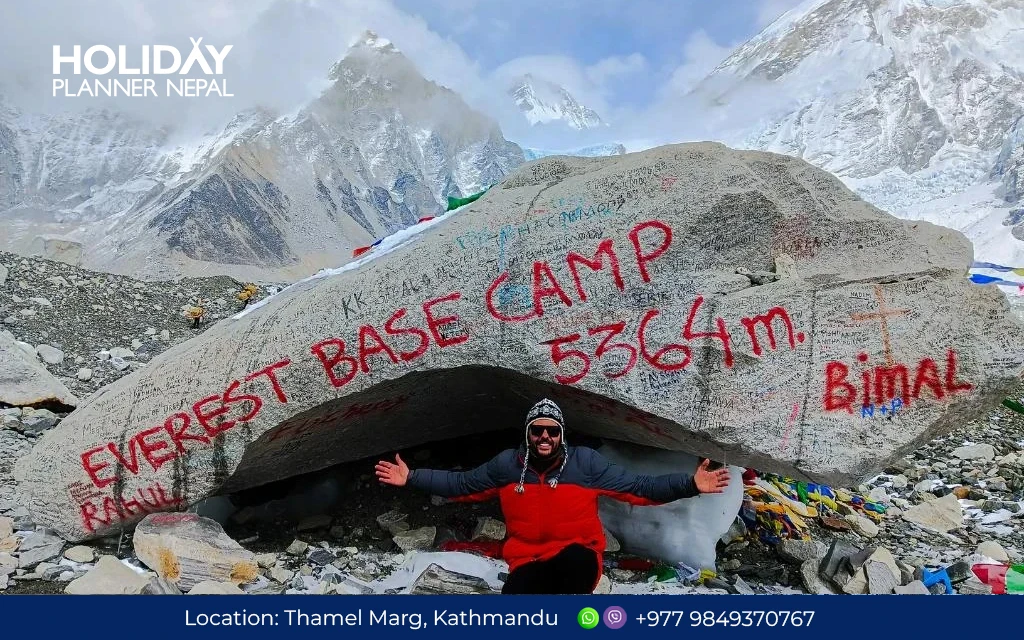
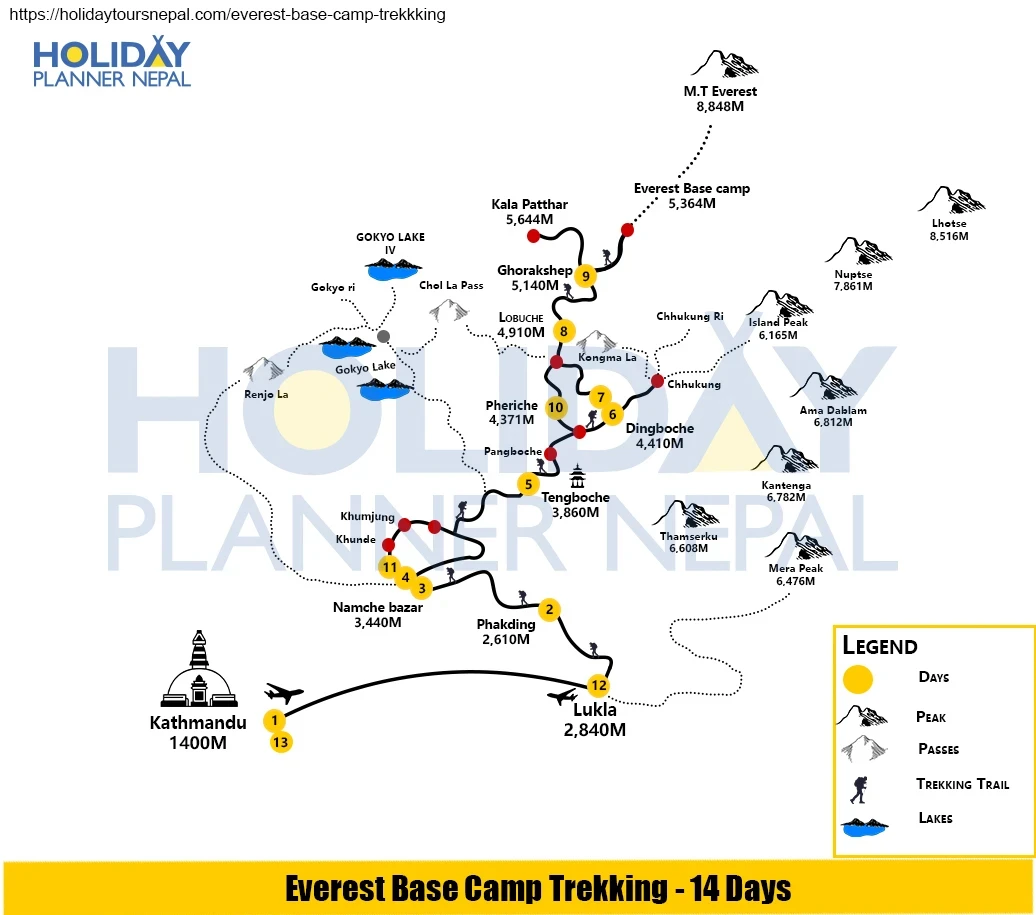
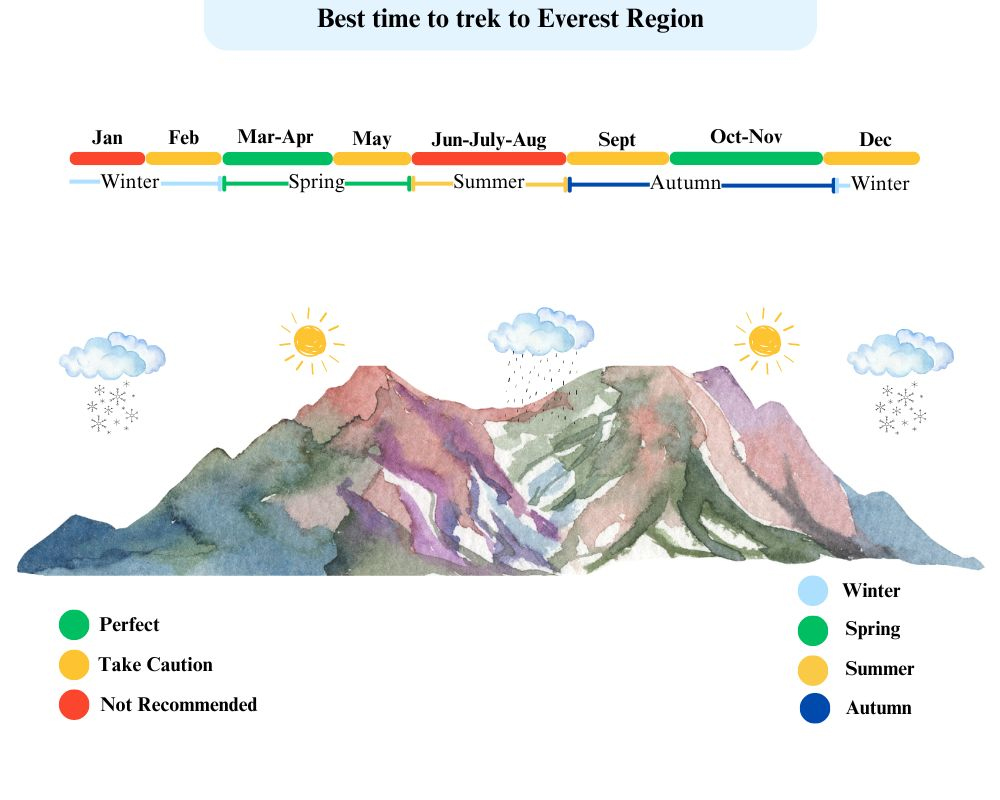
 General
General Upper Body
Upper Body Torso
Torso Lower Body
Lower Body Hands
Hands Feet
Feet Undergarments and Inner Wears
Undergarments and Inner Wears First Aid Kits and MedicationsSunscreen SPF- 50+
First Aid Kits and MedicationsSunscreen SPF- 50+ Other Essentials
Other Essentials